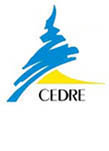Joint venture
It is difficult to give a precise definition of such an agreement, since by its nature, it will include the option of changing opportunities and needs of stakeholders.
For example, assume it is a cooperation agreement, created and endorsed by the contract, therefore, according to the "law of parties" and the pattern similar to that of French participation in companies, it won’t have legal personality.
Therefore in each case, there will arise an interest in national regulations and concerns about protecting the trademark and know-how.
In the case of joint venture, the franchisor enters into a partnernship with a foreign partner, the master franchisee, as part of a company based in the foreign country. If the company formed in joint venture, they could then enter into a development contract or master franchisee with the franchisor. The company will therefore be the "developer" or master franchisee.
One of the advantages of franchising through a joint venture is that the local partner of the franchisor is often an existing company who is familiar with the realities of the locality and can participate actively in the adaptation of the franchise system.
The most important, and it seems the most common disadvantage, is its confrontational nature. However, within international conflicts they can prove to be harmful to the reputation of the network. That would be the case if the franchisor and its local partner in the joint venture did not have the same views on the development of the network control of sub-franchisees, or the standards of the franchisor.
It should be noted that in some countries the franchisor has no alternative but to resort to the creation of a joint venture. If local laws regulating foreign direct investment oblige the franchisor to resort to a joint venture formed with a local partner.
Finally, the best technique for a franchisor to monitor its master franchisee joint venture is to provide a shareholder agreement allowing the franchisor to buy back his partner and transform accordingly the master franchisee joint venture into a subsidiary of the franchisor.
International protection of the trademark
It is important to emphasize that trademark protection should be considered as a prerequisite and not as an accessory operation of activities of commercial export.
This can be justified with two sets of reasons.
The quick review of a local law on industrial property, including trademarks, is important because it allows in some cases, to determine the commercial implantation strategy on that exterior market.
One can, for example, come to the realization that the French trademark cannot be accepted for protection in a foreign country.
The first thing to do is verify that the trademark does not need to be modified or adapted to be protected in the foreign market.
It is also important to study the regulations in trademark licensing. In many countries, licensing of trademarks is subject to very specific regulations, which may determine the content, form, and agreement that we intend to execute with the local partner.
Finally, we must see if it is possible to be the owner of a trademark in the country where relocation is intended. In Germany, for example, “holdings”, which have no industrial or commercial activities, cannot be the owners of a trademark.
There is a second set of reasons for this prerequisite. Ensuring that the trademark is unknown in the country. It is therefore necessary to search for precedence before filing the trademark. This rule is even more important in the case of franchising because there may be sub-franchisees who will be first in line in case of a dispute over the trademark and they may turn against the franchisor or master franchisee (unfair competition, counterfeiting, etc. ...).
On the other hand, we must know that in many countries, registration of a trademark is a prerequisite for licensing and, in this case, the master franchise contract. However, in some countries the registration of a trademark occurs long after the deposit (up to 2 years). (See "The master franchise” Gast Editions, 2001)









